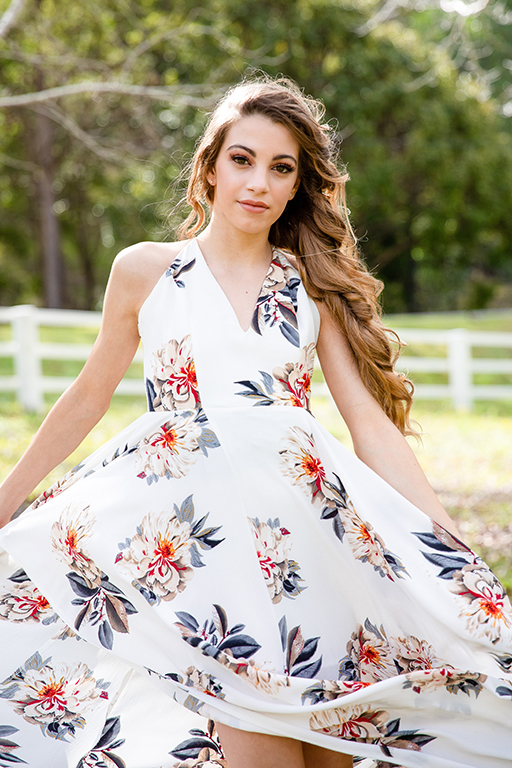The Newbie's Overview to Product Photography
If a picture is worth a thousand words, a spectacular product photo deserves a thousand website visits. Although I do not have information to support that statement (yet), product photography can be exceptionally beneficial to your ecommerce internet site technique.
To reach your target market participants that favor buying online, you likewise require to provide your target market clear, distinctive pictures of your items.
However product photography isn't as basic as aiming as well as firing. Even one of the most fundamental products need the appropriate equipment, lighting, and area to generate beautiful images that offer buyers right from the acquisition web page.
6 Product Photography Tips (and Instances) for Taking Photo That Sell
Here are the suggestions, instances, and also products you'll need to efficiently photograph as well as market your products in a way that makes your visitors and also potential customers want to convert.
1. Don't hesitate to use your mobile phone's electronic camera.
This is the part where I'm expected to convince you to purchase a high-end, 50-megapixel (MP) camera campaign photographer with a 100-millimeter screw-on lens. But I'm not going to do that.
If you currently have a cam that fits this description, take advantage of it. But for numerous sorts of products, it's entirely appropriate to fire product photos on a smartphone.
Newer mobile phones boast powerful electronic camera lenses as well as settings that enable you to optimize your shots for the various kinds of light as well as settings you may fire in.
If you need a lot more persuading, simply check out Apple's Shot On An apple iphone project and the images that have resulted from it for many years such as this set:
2. Fire from a tripod for photo consistency.
Before explaining tripods, I'm obliged to start with a principal regulation: Do not prop your phone versus something tough to intend your lens towards the topic.
It's simply as well easy for this makeshift setup to slide about throughout the shoot as well as cause incongruities in your pictures' look. If you relax your cam on, say, a pile of publications, just be sure this arrangement does not change throughout the shoot.
There's no harm in holding your camera yourself when shooting just a few product pictures for your ecommerce internet site. Yet as your organization expands, as well as you take much more photos of even more items, it can be challenging to standardize the product's alignment in each photo when firing handheld.
To guarantee consistency throughout your products, you'll need a tripod. And thankfully, getting one isn't always the huge, industrial-sized investment it used to be.
Here are two kinds of tripods to take into consideration.
Typical vs. Versatile
This is a tradition tripod-- there are typical tripods readily available for both electronic cameras and smart devices.
A adaptable tripod can be manipulated in a variety of methods. You can flex its legs and also position it on different surfaces to get the angle you need.
Mobile Hold
There's frequently a screw on the top of your tripod which connects to your cam to hold it in place. The bottom of the majority of professional-grade electronic cameras has a screw opening just for this objective, however smart devices can utilize the following adapter:
The adapter holds the sides of your smart device as well as can screw right into either type of tripod, allowing you to run the camera manages with the phone display facing exterior and towards you.
Once you identify which mount you'll need, set it up before your product, and consider placing three pieces of tape on the ground to mark where you would love to maintain each leg of your tripod over the course of the shoot.
3. Choose natural light or artificial light.
Never ever ignore exactly how certain sorts of light can enhance (or prevent) your product photography. Bear in mind, customers obtain the best look at an product personally, where they can see everything they need to before purchasing. The right lights plan aids you expose those critical decision-making product functions when all web site site visitors need to go on is a photo.
A single lighting configuration could not help every product-- a illumination setup that helps some products might deteriorate the appearance of others.
There are 2 sorts of light you can pick as your main light source: all-natural and also artificial light.

Natural Light
Natural light refers to sunshine-- easy as that. It's additionally referred to as "soft light" due to the fact that the sunlight casts a larger, softer variety of light than, state, a lamp radiating straight on the product. Ecommerce product shots grow in all-natural light if:
The product is shot outside or meant to be used outside.
The product is made use of by, worn on, or shot with a individual (people have a tendency to look far better in natural light).You're attempting to stress the product's environments, as opposed to certain attributes of the product.
Here's an example of a shot utilizing natural light:
Artificial Light
Fabricated light consists of candle lights, fire, and also extra frequently, light bulbs. It's likewise described as " tough light" due to the fact that it generates a smaller sized however extra concentrated light surface area. This sort of light deals with items with physical information that need to be highlighted to excite an online shopper.
As a basic policy, stay with just one type of light per photo-- all-natural or artificial. Adding natural light to an synthetically lit photo can soften a product that's suggested to look sharp, and also adding fabricated light to a normally lit photo can sharpen a product that's indicated to look soft. You do not intend to enter your very own means.
4. Load or jump your light to soften darkness.
Whether you utilize all-natural light or fabricated light, you'll need to decrease the darkness that any kind of possible tough light casts on the contrary end of a product.
There are three ways to do this:

Load Light
Consist of one more, less-intense light to supplement your major light. This extra light is called your fill light and also is made use of as a counterbalance to soften the all-natural darkness your major light produces behind an things.
To do this, place your fill light opposite your primary light so your product rests between both lights.
Flashbulb Bounce Card
A bounce card, or reflector card, is a little card that "reflects" or "bounces" the main light back onto the surface below your product to lower shadows.
Some bounce cards connect to the flashbulb of a expert camera lens to diffuse the light from the camera's flash. This card sprays a softer campaign photography light onto the subject from over your collection-- instead of right at it-- so you don't have lengthy darkness trail behind the item you're shooting.
Standalone Bounce Card
If you're shooting from a mobile phone, a flashbulb bounce card isn't an option, since you do not have a physical flash you can attach it to. Rather, make your own standalone bounce card positioned opposite your major source of light.
For newbies to product photography, this bounce card can effectively change your fill light, which counters the hard light from the electronic camera flash or light that's dealing with towards the front of your product.
5. Make use of a move or picture setting to highlight the product.
There isn't one ideal way to position your product, lights, and also bounce cards-- they can change drastically relying on your history. However do not pick a background based upon what's simplest to create. Histories need to resemble just how you want your customers to perceive your product when watching it online.
Take into consideration initially whether you would certainly such as a white background or a much more dynamic, real-world history. There's an easy means to accomplish every one.
White Background: Sweep
For white histories, it's not as simple as establishing a table against white drywall. Also mobile phone cameras can grab little imperfections on a white wall surface that you would not see with the naked eye. To catch a ideal white background without any corners or acnes, make use of a move.
A sweep is a huge bendable sheet of paper, whose bottom acts as the surface area beneath your product and then contours up into a white wall surface behind the product.
On video camera, the sweep's contour is undetectable, emphasizing vital product information as well as enabling the item to have all of a site visitor's focus.
Real-World Background: Picture Setting
Dynamic, real-world histories are extremely appealing when shooting products that have a specific usage or are being modeled by a individual-- as you saw in the picture of the briefcase previously in this overview.
However, it's easy for a real-world history to steal the emphasis of the photo, making it unclear which product in the photo you're in fact selling.
Offer your product depth and emphasis with portrait setting, a image setting on the majority of professional video cameras, and additionally offered on several brand-new smartphones. This setting obscures the background so the context of the product is clear yet not completing versus the product itself.
Below is a super amazing photo of a HubSpot pen absorbed picture setting on a Google Pixel 2 (I took this image myself). You can inform the pen rests on a workdesk with a computer system behind it, however the pen is still the centerpiece for audiences:
6. Fire a selection of photos.
My last ecommerce photography tip to you is to not quit at one photo per product. Equally as your customers look, hold, make use of, and also even try out merchandise in a store, your website ought to fire a variety of photos to imitate this really experience.
If you're shooting garments, for instance, capture the garment of apparel alone-- that is, expanded on a white surface area-- along with on a mannequin whose color contrasts the color of the product.
Then, for extra photos, have the apparel modeled on a individual, allowing you to take images of the product from the individual's different poses as well as angles.
Product Photography Set Up
Next off, let's summarize what we simply received-- below's a checklist of quick product photography set-up pointers that you can refer to and also share on your group:
• Choose a video camera-- whether that means using your mobile phone.
• Obtain a tripod that helps your cam of option.• Select all-natural or fabricated illumination-- think of which choice is best for your product and also environment.
• Determine whether you'll load or jump light.• Select move or picture mode.

Get going With Your Product Photography
Don't feel obligated to purchase every idea and tool at the same time. Use these product photography ideas slowly to see what makes your shop look the most nice, and also transform your approach as your photography chops improve.